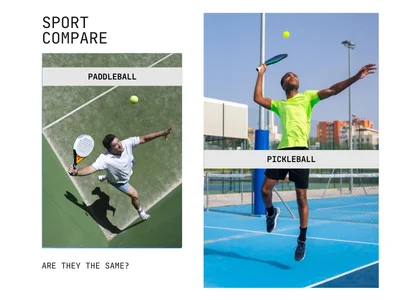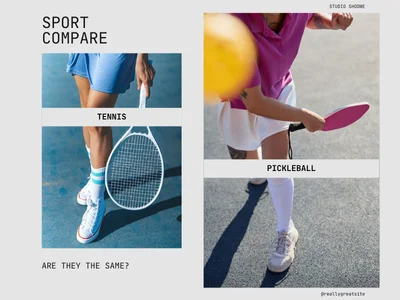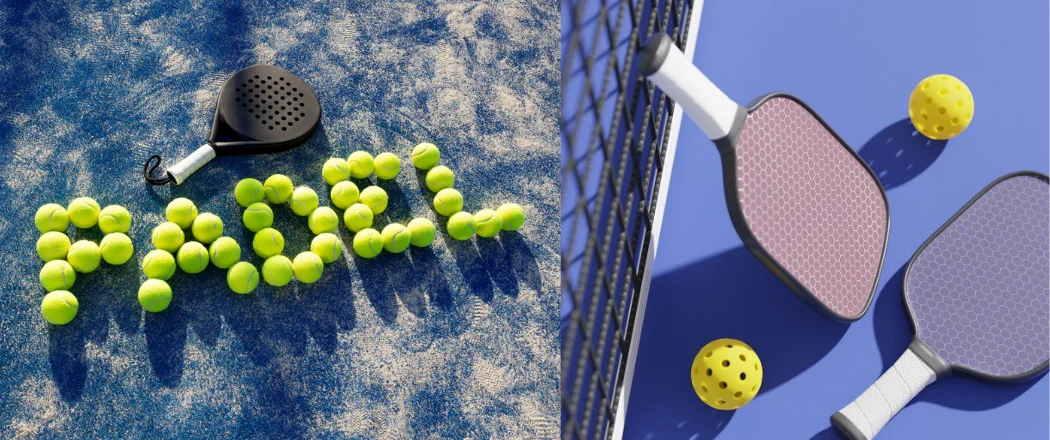
Have you experienced Padel vs Pickleball? This article is your gateway to unraveling the mysteries of these 2 sports. Our mission? To tackle the burning question on every player’s mind! “What is the differences between padel and pickleball?”!
I’ll embark on a journey exploring:
- The intricate rule
- Unique scoring systems
- Diverse court dimensions
- Specialized equipment.
Beside, I’ll let you know the popularity of these sports and the energy they demand. This will bring valuable knowledge if you’re a seasoned player charting a new course or even a newbie! I’m here to provide worthy insights to guide your decision-making process based on several years playing two this sports.
Summarize Table
| Aspect | Pickleball | Padel |
| Rule | Points are scored only on serve.It has a Two Bounce Rule and Non-Volley Zone (Kitchen) faults. | Underhand serve.The ball must bounce in the court before hitting the walls |
| Scoring | First to 11 points (win by 2). The score is called server score, receiver score, and server number (1 or 2) Simpler and faster scoring system. | More intricate and longer scoring system. |
| Court/Dimension | 20 feet wide x 44 feet longSmaller and more open court. | 20 meters (66 feet) long x 10 meters (33 feet) wide.Larger and enclosed court. |
| Equipment (Ball) | Plastic, 2.874 inches in diameter, weight 0.9 – 1.0 ounces, 26-40 circular holes.Smaller and lighter ball. | Rubber with felt covering, 6.35 to 6.77 cm diameter, weight 56.0 to 59.4 grams. Larger and heavier ball. |
| Equipment (Paddle/Racket) | Various materials (carbon fiber, wood, aluminum, polymer, fiberglass). Combined length & width max 24 inches.Smaller and lighter paddle. | Fiberglass or carbon fiber with foam core.Max length 45.5 cm, max head width 26 cm.Larger and heavier racket. |
| Popularity | Faster-growing in the US. | More globally popular. |
| Difficulty | Easier and more accessible. | Harder and more physically demanding. |
Key Differences Between Padel & Pickleball
Rule
There are so many considerations when playing these sports! If you don’t understand the rule, you 100% make a mistake continuously and become burned out for it! So I recommend you read this part carefully to compare the exact rules of both sports.
The key differences between pickleball and padel rules are scoring system, bounce requirements, non-volley zone restrictions, and out-of-bounds play allowances but pickleball might be considered more challenging than paddle!
For Pickleball Rules
There are 3 fundamental rules that you must remember when starting to play pickleball!
- You can only earn points when you serve. The first team that reaches 11 points will win, but you have to win by at least 2 points.
- Two Bounce Rule: After the serve, the receiving team must let the ball bounce once before hitting it back. Then, the serving team also has to let the ball bounce before returning it. From there, both teams can choose to hit the ball before it bounces (volley) or wait for it to bounce first (ground stroke).
- The Non-Volley Zone (NVZ) Faults: You can’t step into this area when making a volley shot! Plus, if any clothing, jewelry, or paddle falls into the NVZ during a volley, that’s a fault. However, you can step into the NVZ after a ground stroke or retrieve a ball that bounces there first. This rule is there to keep the game safe and make rallies longer.
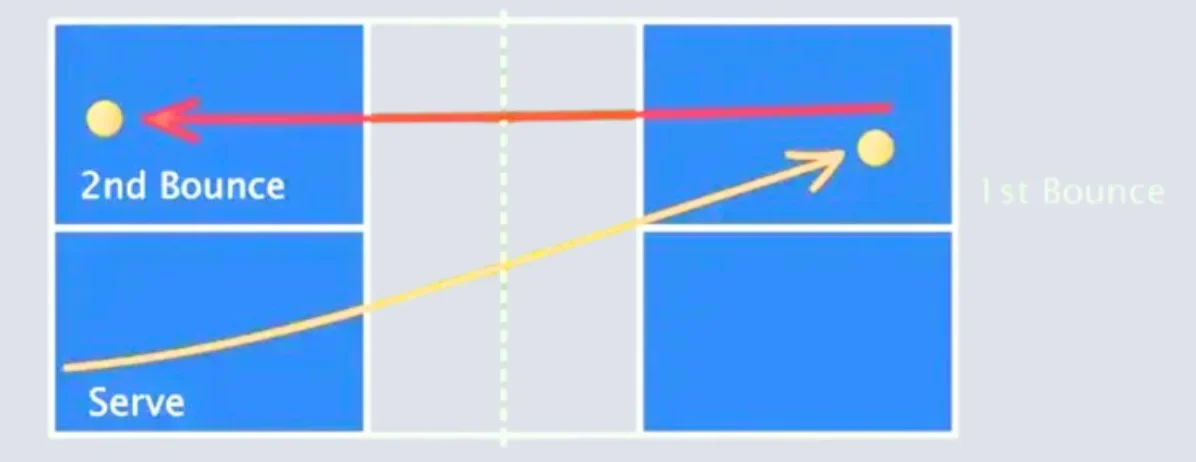
For Padel Rules
Based on the sports website Tennis for Britain, you must grasp the rules of Padel to have a basic foundation of knowledge!
- Padel starts with an underhand serve. But what is a valid shot that is good? It must clear the net and bounce in the court before hitting any walls or the cage. If it hits a wall or cage without bouncing first, it’s out, your opponent’s score. Serves can bounce and hit a wall, but hitting the cage on serve is a fault.
- One-Bounce Rule: You only get one bounce to hit the ball back. If it bounces twice on your side, you lose the point.
- Out-of-Bounds Play: In padel, powerful shots like smashes can bounce in the court and then go outside the cage. You can go through the doors to hit the ball back into play when this happens.
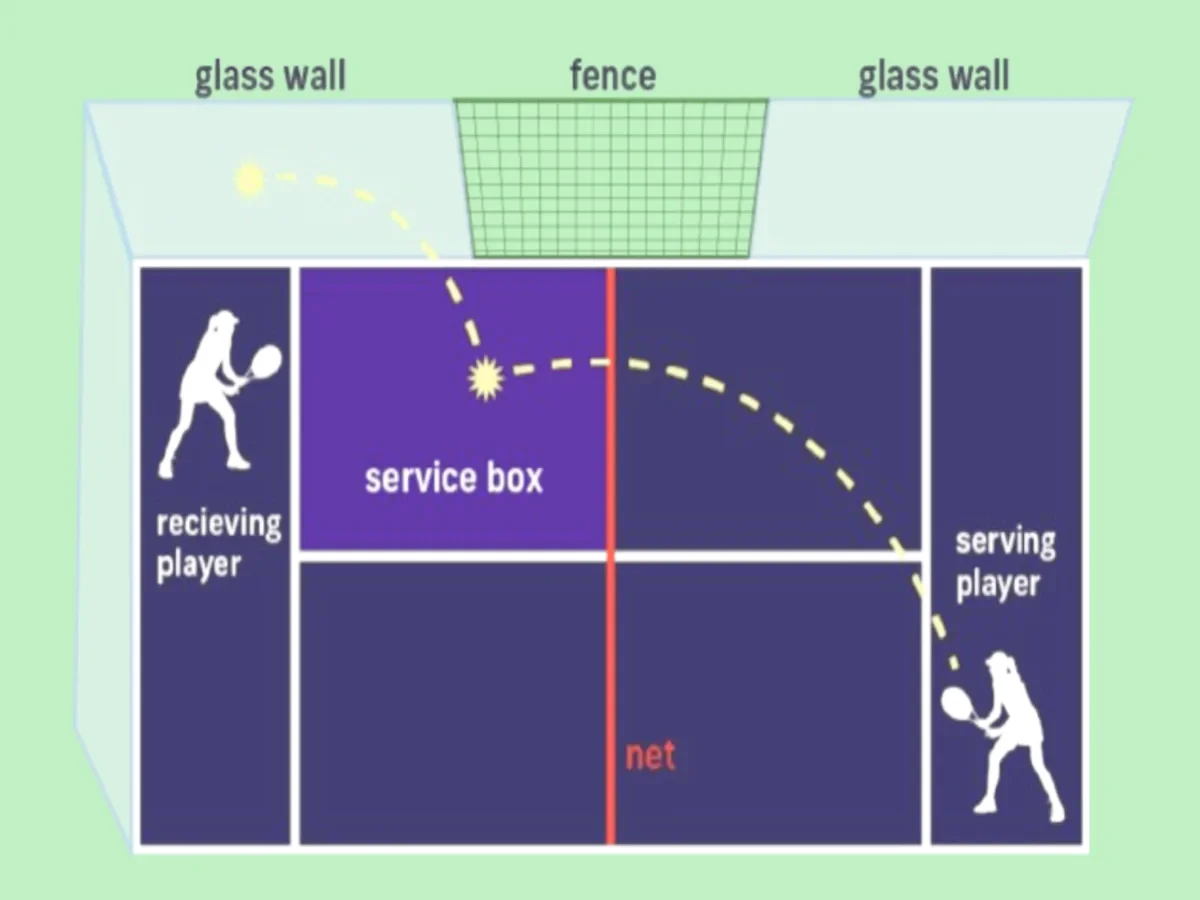
Based all that factors, pickleball might be considered more challenging than paddle!
Scoring
The key differences between scoring systems of both are point values, serving requirements for scoring, set structure, and game-winning conditions.
The pickleball scoring system is quite unique. Only the serving team can earn points, and each point scored equals one. Of course, I repeat this information because it’s important! If the receiving team wins a point, they get the chance to serve.
To win a game, a team must reach 11 points, but they also need to win by 2 points. You’ll notice three numbers right from the start when you look at pickleball scoring. Here’s what each number means in a pickleball score:
- First number: the current score of the serving team
- Second number: score of the opposing team
- Third number: which server in a team currently has the serve (will always be 1 or 2)
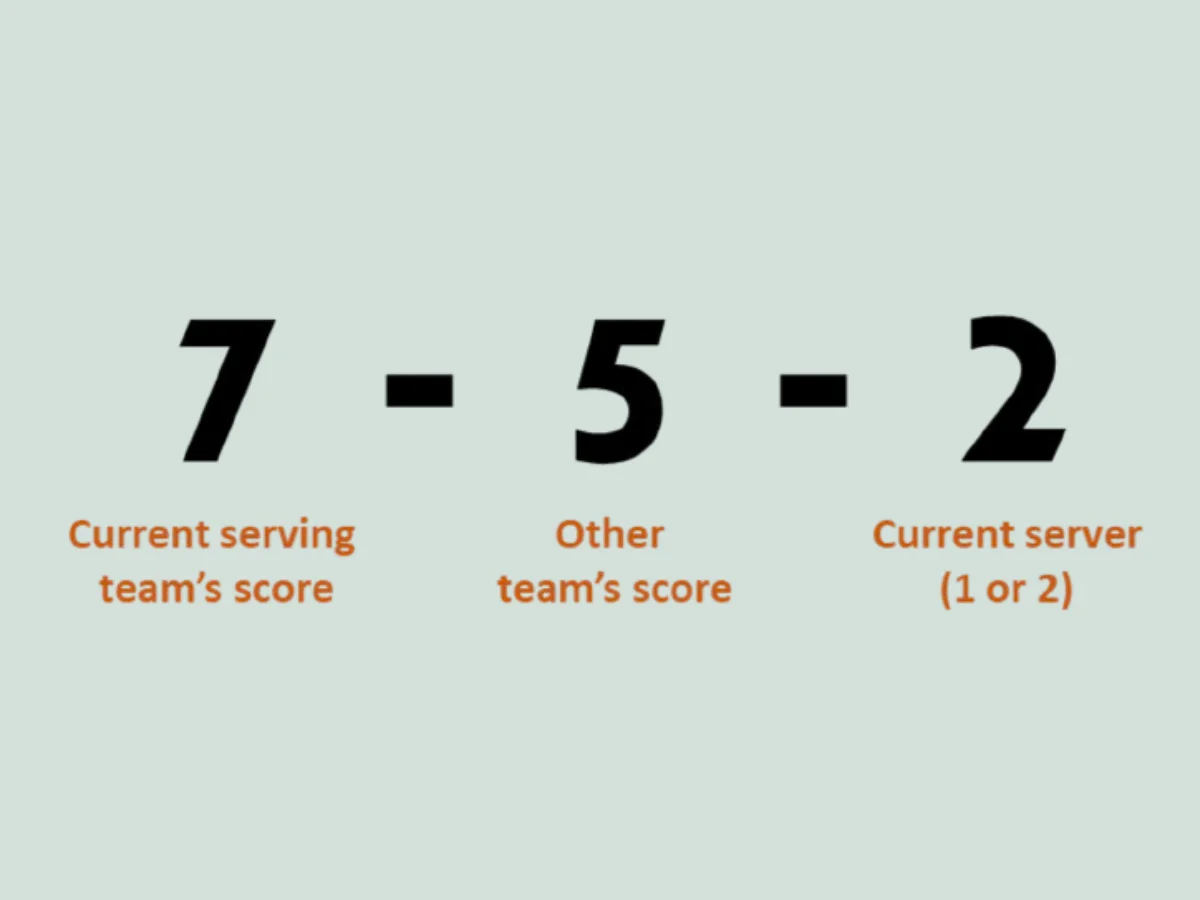
The scoring system of Padel games is similar to tennis. So if you know about the scoring system of tennis, it will be easy to understand the scoring system of Padel! But don’t worry if you have any experience with either; i’m here to help you!
Each point in Padel has a corresponding value:
- 0 points: No points
- 15 points: 1 point
- 30 points: 2 points
- 40 points: 3 points
- Victory: 4 points
When the score in a game of Padel reaches 40-40 (or “deuce”), the game enters a crucial phase.
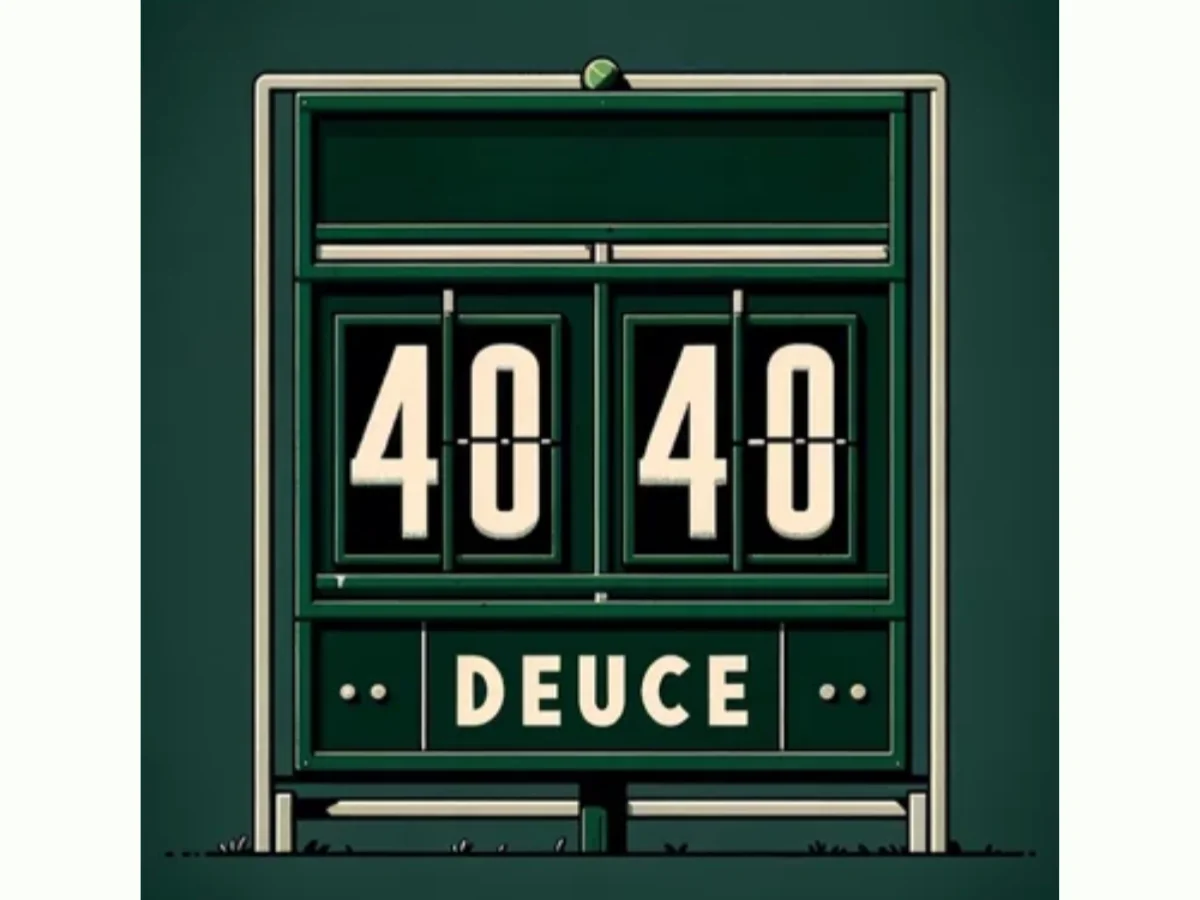
The player who scores the next point gains the “advantage.” In order to win the game, the player with the advantage must score another point while maintaining their lead. If the opposing player scores, the game returns to deuce.
In Padel, sets consist of six games, similar to tennis. To win a set, a player or team must secure six games with a minimum lead of two games over their opponent. A tiebreaker is played if the set is tied at 6-6.
In a nutshell, for starters, the scoring system of Pickleball might be easier to grasp as it’s quite straightforward.
Court/ Dimension
Let’s discuss the dimensions and layout of a pickleball court in detail. It will include overall dimensions, presence of walls/cage, net specifications, and specialized zone layouts.
A standard pickleball court is 20 feet wide and 44 feet long, and the same court size applies to both singles and doubles play. They can be indoor or outdoor and closely resemble courts used for tennis and badminton.
According to USA Pickleball, the court’s layout has three main parts:
- Non-volley zone (NVZ) or Kitchen area: This area is located on both sides of the net. Each NVZ is a rectangle measuring 7 feet by 20 feet.
- Centerline: This line divides the court into two halves. It extends from the baselines to the NVZ and is 22 feet long.
- Service area: This area is located beyond the NVZ on both sides of the centerline, including the centerline, the sidelines, and the baselines. Each service area is a rectangle measuring 15 feet by 10 feet.
Plus, the pickleball net’s height is 36 inches at the sidelines and decreases to 34 inches at the center of the court. Overall, the net measures 20 feet by 3 feet.
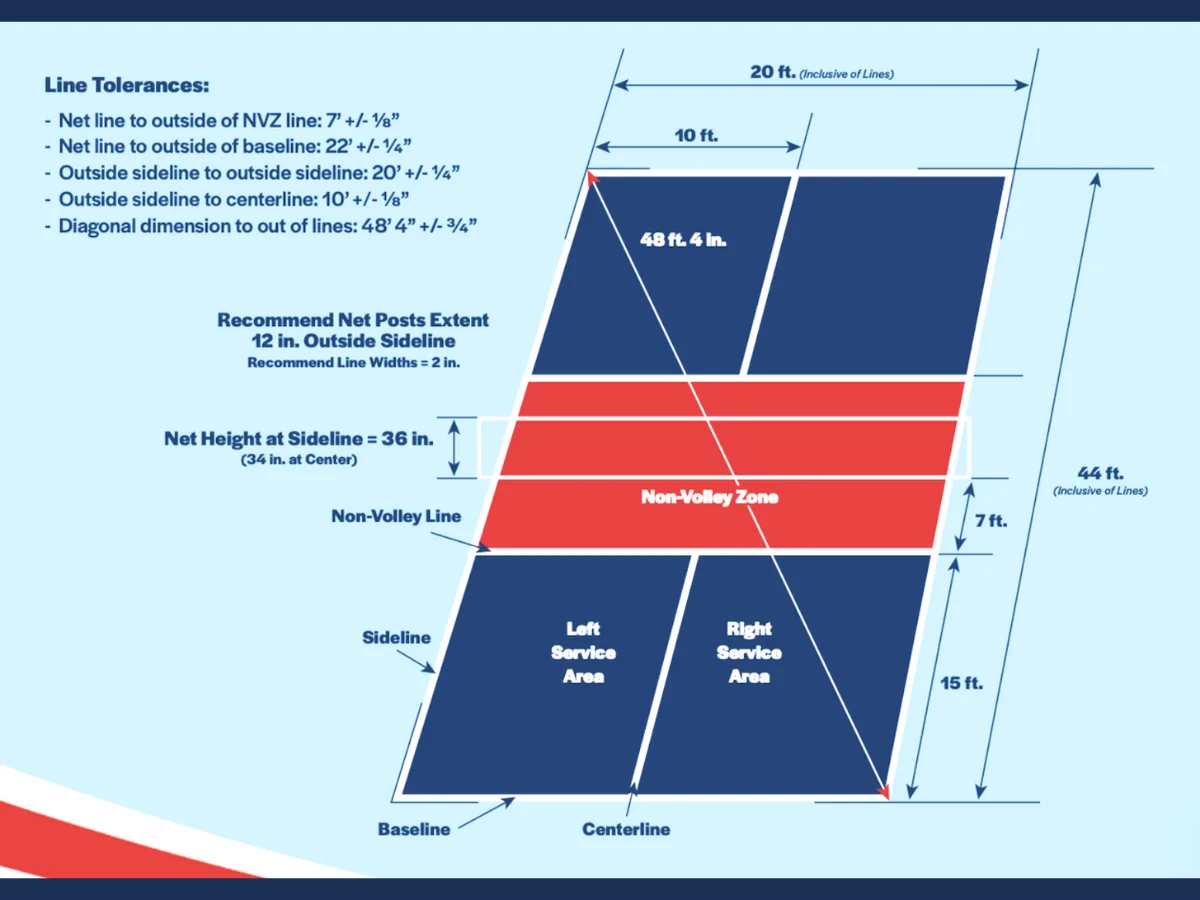
The court is divided into two service boxes and surrounded by glass walls, a metal cage, and doors on either side.
According to the International Padel Federation (IPF) regulations, the padel court is 20 meters (or 66 feet) long and 10 meters (or 33 feet) wide.
Here are some more detailed size specifications:
- Back Height: The back wall is 4 meters (or approx. 13 feet) high
- Sidewall Height: It consists of two panels, the first 4 meters (or 13 feet) high and the second 3 meters (or 10 feet) high.
- Space Around the Court: For safety, the court should have at least 0.5 meters (or 1 ft 8 inches) of space around the perimeter.
- Padel Court Height: At least 6 meters (or 20 feet) of cleared space must be above the court, measured from its lowest point.
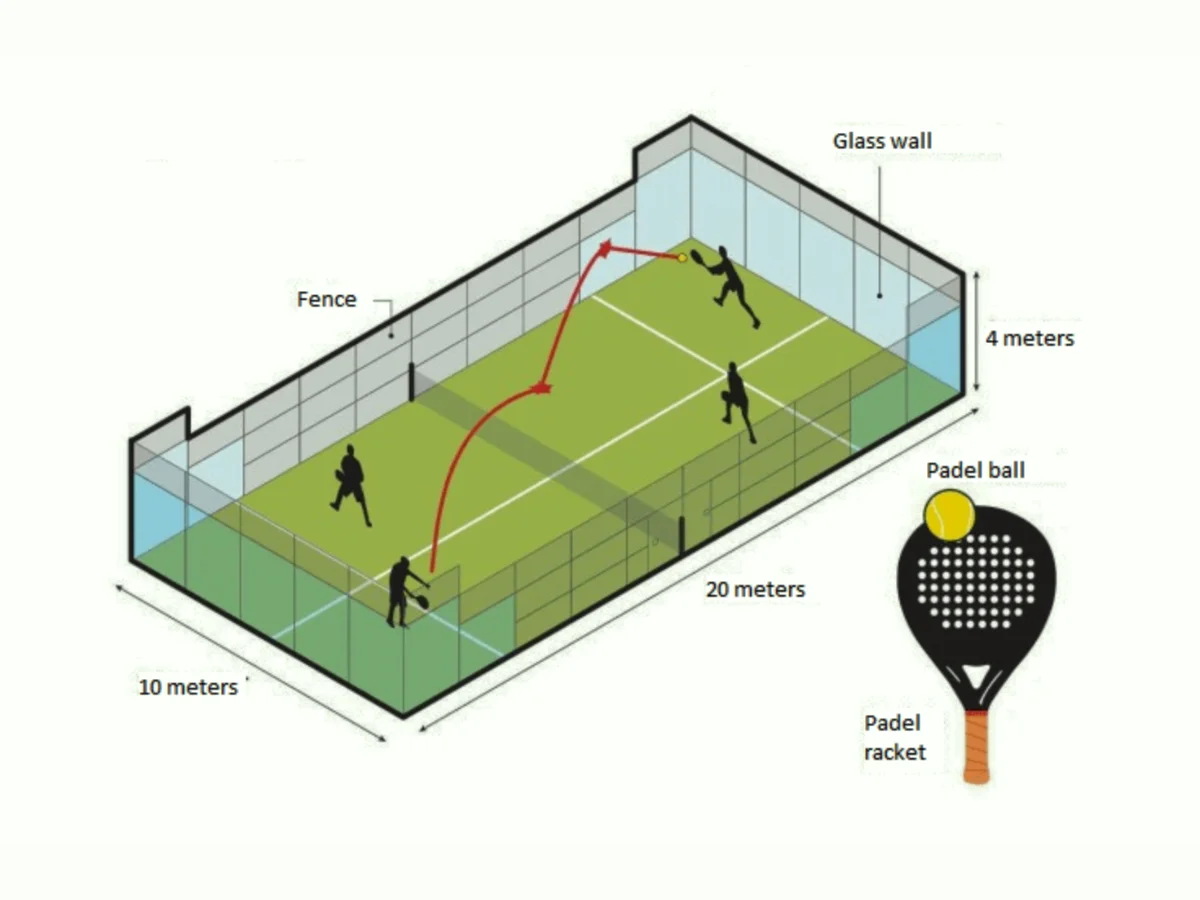
Equipment
For equipment, I will compare ball and paddle/racket between padel and pickleball!
The key differences between balls are size, weight, material composition, hole presence, and bounce characteristics. And paddles will differ in weight range, overall dimensions, surface design, and shape variations.
Ball
The padel ball is larger and heavier than the pickleball ball.
A standard padel ball typically has a diameter of 6.35 to 6.77 centimeters and weighs 56.0 to 59.4 grams. Its internal pressure determines its bounce!
Many options are available, including high bounce, medium bounce, and low bounce. These balls are commonly made of rubber, pressurized air, and a felt covering.
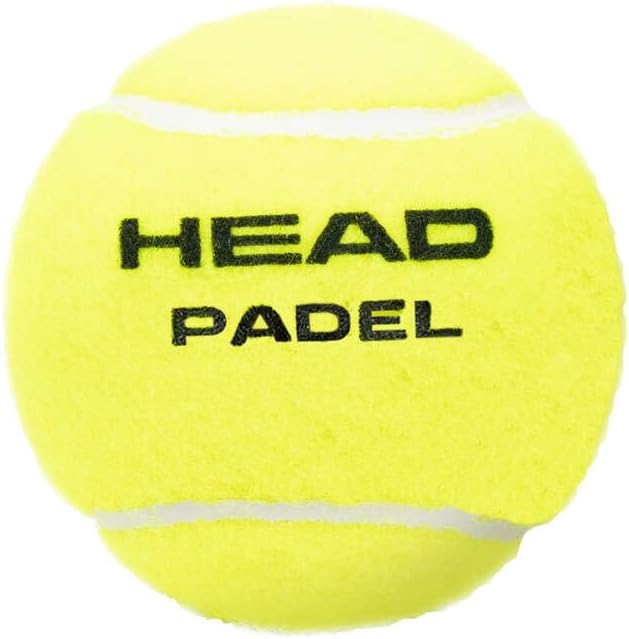
For pickleball balls, these balls have specific dimensions and properties to adhere to standard regulations.
A standard ball has a diameter of 2.874 inches (73mm) and weighs between 0.9 – 1.0 ounces (26-28 grams). It also features a minimum of 26 to 40 circular holes in their design.
When dropped from a height of 78 inches, a pickleball ball must bounce between 29 and 34 inches. Typically, pickleball balls are made of plastic polymer with a hollow center and are bright yellow or green for high visibility.
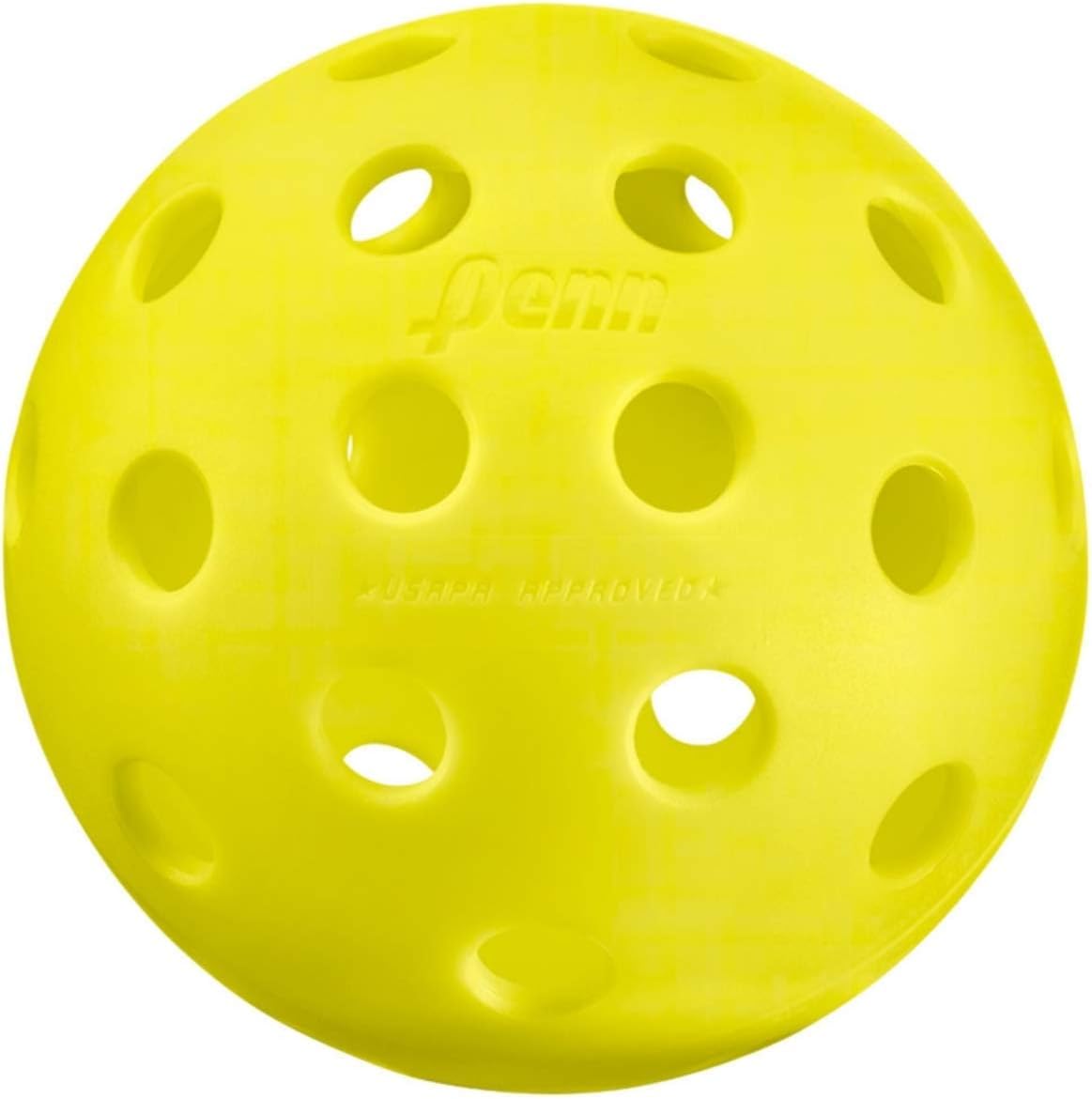
Paddle/racket
When compare paddle of padel vs pickleball, Pickleball paddles are generally lighter and thinner, but Padel rackets are larger in size.
For material, Pickleball paddles are usually made of carbon fiber, wood, aluminum, polymer, or fiberglass. The paddle’s design is solid, and it has a big sweet spot for accurate ball control.
Did you know that according to the official USAPA rules, pickleball paddles have no specific weight restrictions? But interestingly, most paddles used by players will weigh from 7.2oz (204g) to 8.5oz (241g).
It gets even more intriguing! The combined length & width of the paddle (edge guard and end cap) cannot exceed 24 inches (60.96cm), and the length of the paddle itself cannot exceed 17 inches (43.18cm).
Plus, there are also no specific restrictions on the thickness of pickleball paddles, but you’d be amazed to know that most are between 0.4 and 0.6 inches (1.0 and 1.5cm) thick.
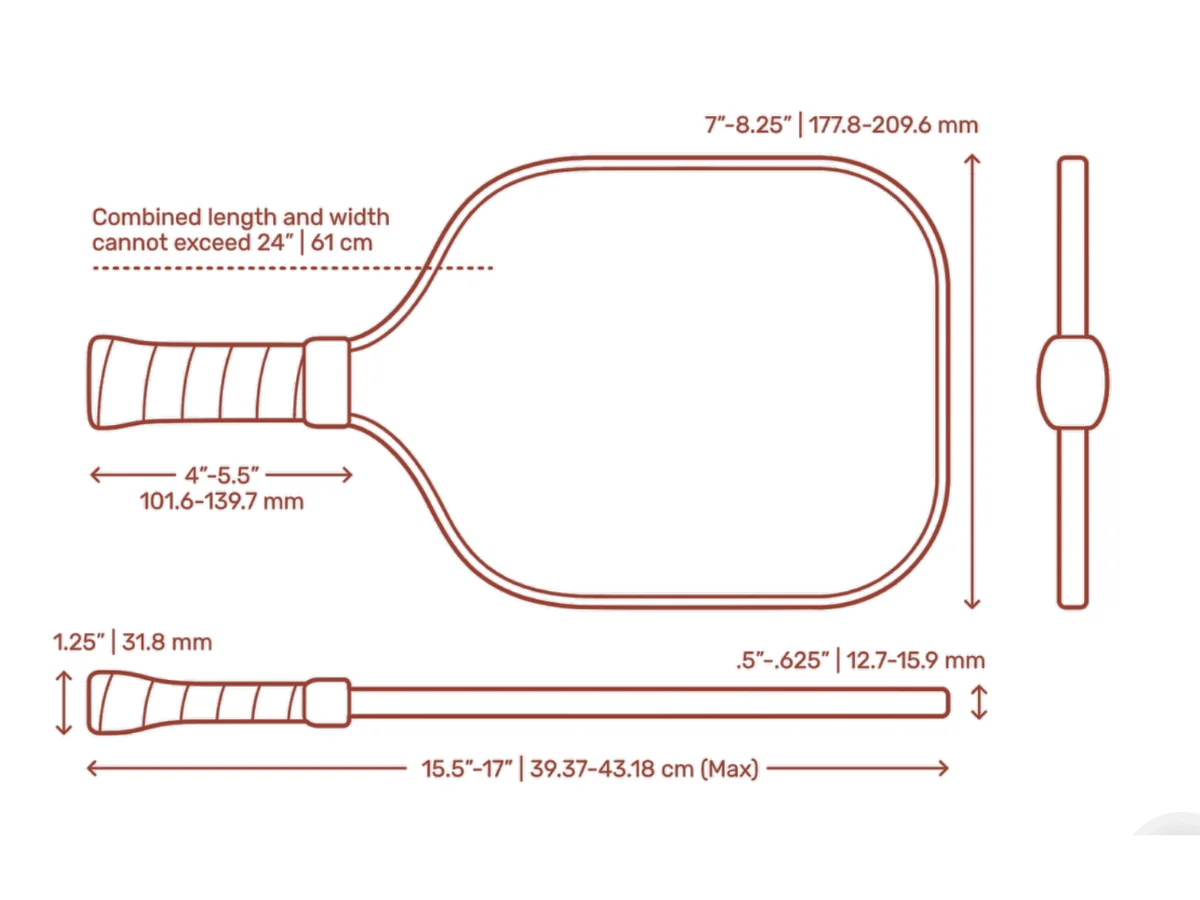
Padel Rackets are typically made from either fiberglass or carbon fiber with a foam core! The surface includes holes of varying sizes and arrangements, giving each paddle unique playing characteristics. These rackets are available in three shapes: round-head, teardrop-head, and diamond-head!
The weight typically ranges from 365 grams to 396 grams. Additionally, the total length of the Padel Racket must not exceed 45.5 cm, the handle can be a maximum of 20 cm long, and the head must have a maximum width of 26 cm! And the maximum thickness is 38 mm.
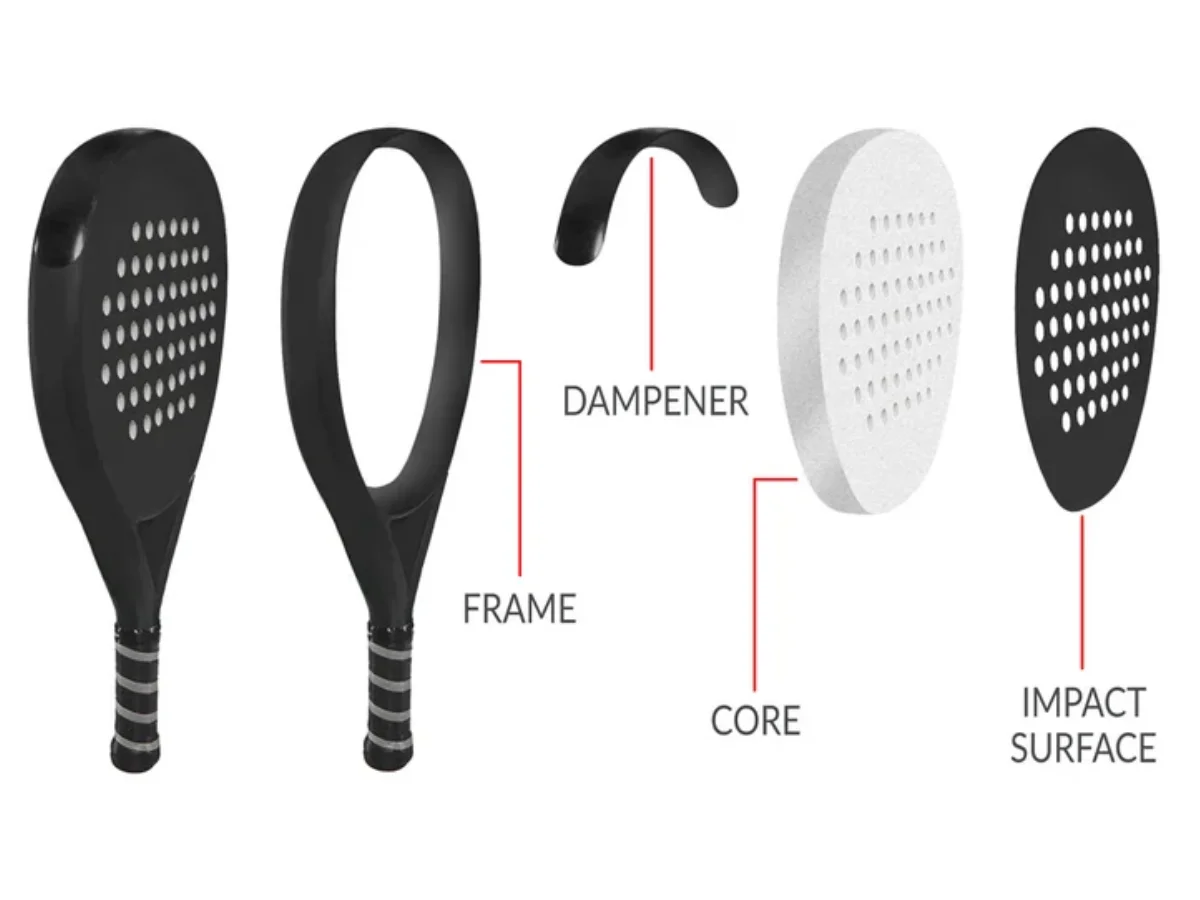
Popularity
As I have seen in US, Pickleball has seen a rapid rise in popularity. But I’m a person who likes to prove everything with numbers and statistics! Below is information from reputable sources about sports worldwide!
There are 8.9 million pickleball players in the United States as of early 2023. The number of pickleball players rapidly increased by 85.7% in 2022, and the growth rate for the three-year period (2020-2022) is an impressive 158.6%. It’s interesting to note two out of three players play Pickleball more than eight times a year. So impressive!
Conversely, Padel has recently become one of the fastest-growing sports globally! It boasts over 25 million players in over 90 countries. The global market size of Padel amounted to approximately two billion euros in 2022! As of 20222, there are an estimated 40,000 Padel courts globally.
Even better? The average monthly growth of padel players over the past three years was approximately 13.22%, and female players make up 37.5% of recreational players.
It’s evident that Pickleball is more prevalent in the United States! But, in comparison, Padel has a larger global presence, with more players worldwide.
Difficulty
Padel can be tricky compared with pickleball! The reasons are due to the unpredictable ball’s flight, crucial teamwork, and long rallies, which demand a lot of stamina. Additionally, hitting winning shots can be tough! It requires high concentration levels, anticipation, and fast reflexes, especially at the net. Mastering the lob shot also takes a long time!
Pickleball is generally considered easy to learn for beginners. The smaller court size and slower-paced gameplay make it accessible to players of all ages and skill levels.
Final Though
I to provide a detailed comparison between Padel and Pickleball! By examining their rules, scoring systems, court dimensions, equipment, popularity, and difficulty levels, I sought to answer the question:
- What is the differences between Padel and Pickleball?
- Which sport is more difficult?
- Which sport is more popular?
Truly, the most significant differences between Padel and Pickleball lie in their unique rules and court sizes.
- Padel played on a larger court, introducing the intriguing concept of wall play!
- Pickleball features a distinctive non-volley zone on a smaller, open court.
These unique rules are the key to understanding the gameplay and strategies in each sport.
In my opinion, both sports offer unique and enjoyable experiences! However, Padel appears to be the more challenging of the two. Its unpredictable ball trajectories, longer rallies! So, it is ideal for thrill-seekers wanting a full-body workout. With its gentler learning curve, pickleball suits beginners and those preferring precision over intensity.
Visit our Pickleball Blog for more information about pickleball world


